One might ask oneself why we are insisting on rotating tank experiments. In order to establish that rotation isn’t just there to make equations a lot more complicated, but that it actually changes how things behave, we ran two different experiments.
Turbulence in rotating and non-rotating system
First the probably easiest experiment anyone could imagine: Dripping dye into water.
In the picture below, the upper plots look like what you are probably familiar with if you have ever taken any kind of dye and dripped it into water. On the left is the top view: more or less circular dyed plumes are visible. On the right, we look into the tank from the side: Now we see the structure of those plumes. Dye sinks down and spreads to the sides on the bottom. Plumes look similar to what one might know from nuclear mushroom clouds, except upside down.
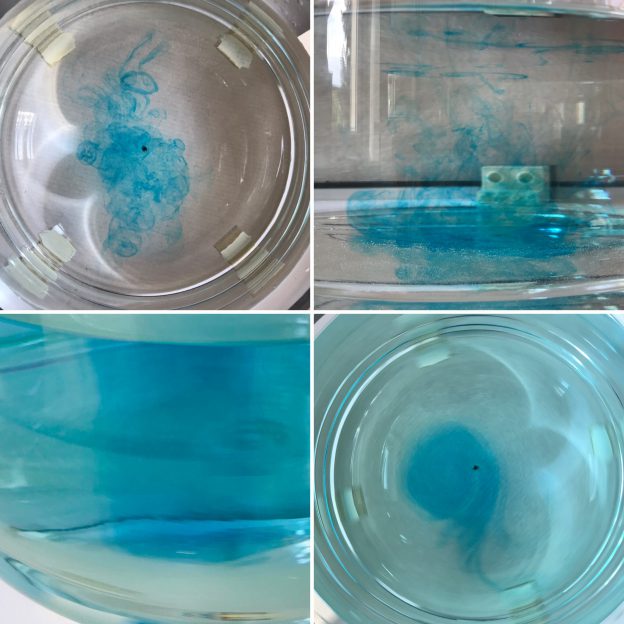
In the rotating case, however, if we look in from the side, we see uniform sheets of dye that reach all the way from top to bottom and that wrap into each other. Looking in from the top, we see that the disturbance has formed an eddy. The structure is clearly two dimensional, which is in stark contrast to the intricate 3D structures we saw in the non-rotating case.
Some of the students really enjoyed creating artistic pattern using the way rotation deforms any dye blobs!
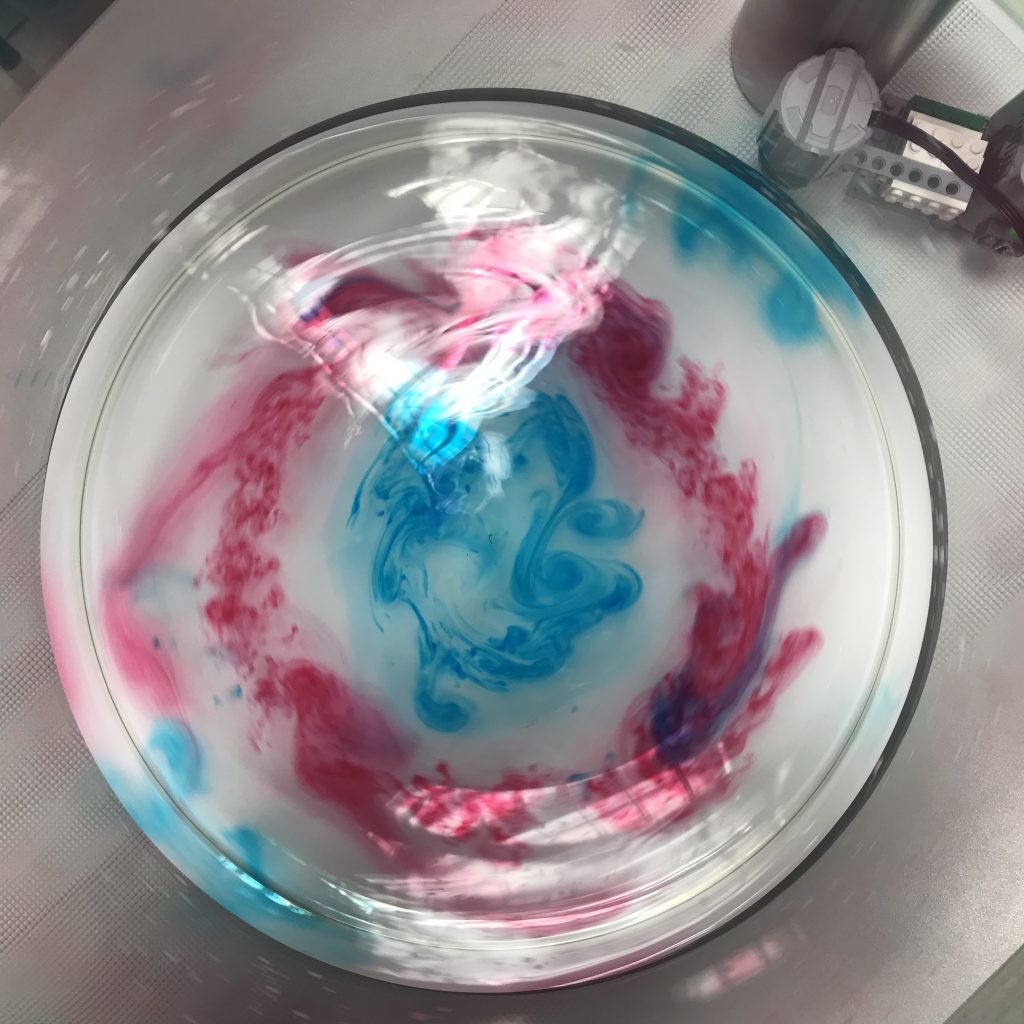
Looks as if rotation has a pretty important effect on turbulence, right?
More pictures and a movie about this over on my blog.
Thermally driven circulation in rotating and non-rotating systems
Another example for the importance of rotation is a simple thermally driven circulation.
The classical overturning circulation is easy: A rectangular tank is filled with lukewarm water. Using a frozen cool pack for sports injuries on one end, water is cooled to represent cooling at the poles. That cold water sinks to the bottom and spreads there. Where it sinks, it is replaced by warmer surface water that is marked with red dye. Voilà — an overturning circulation is set up!
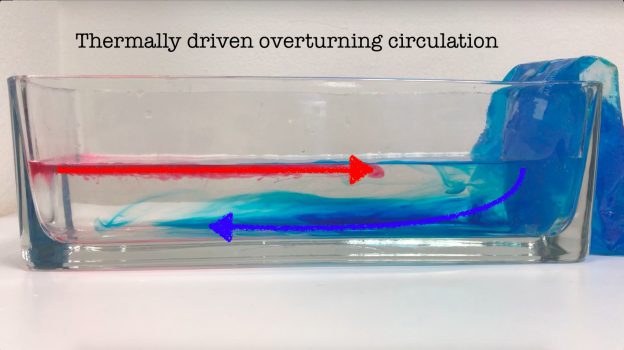
The next step then is to come from a “slice” of the ocean to a rotational symmetric experiment with a cold “pole” in the middle and the warmer lower latitudes around it, see below on the right.
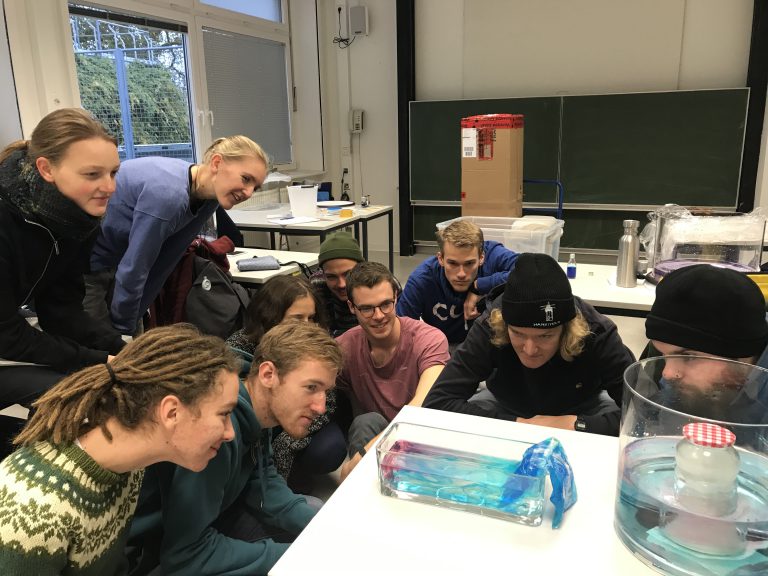
In both cases, we see cold water sinking to the bottom, spreading at the bottom, and being replaced by warmer water.
But now what if we rotate this setup? Then this happens:
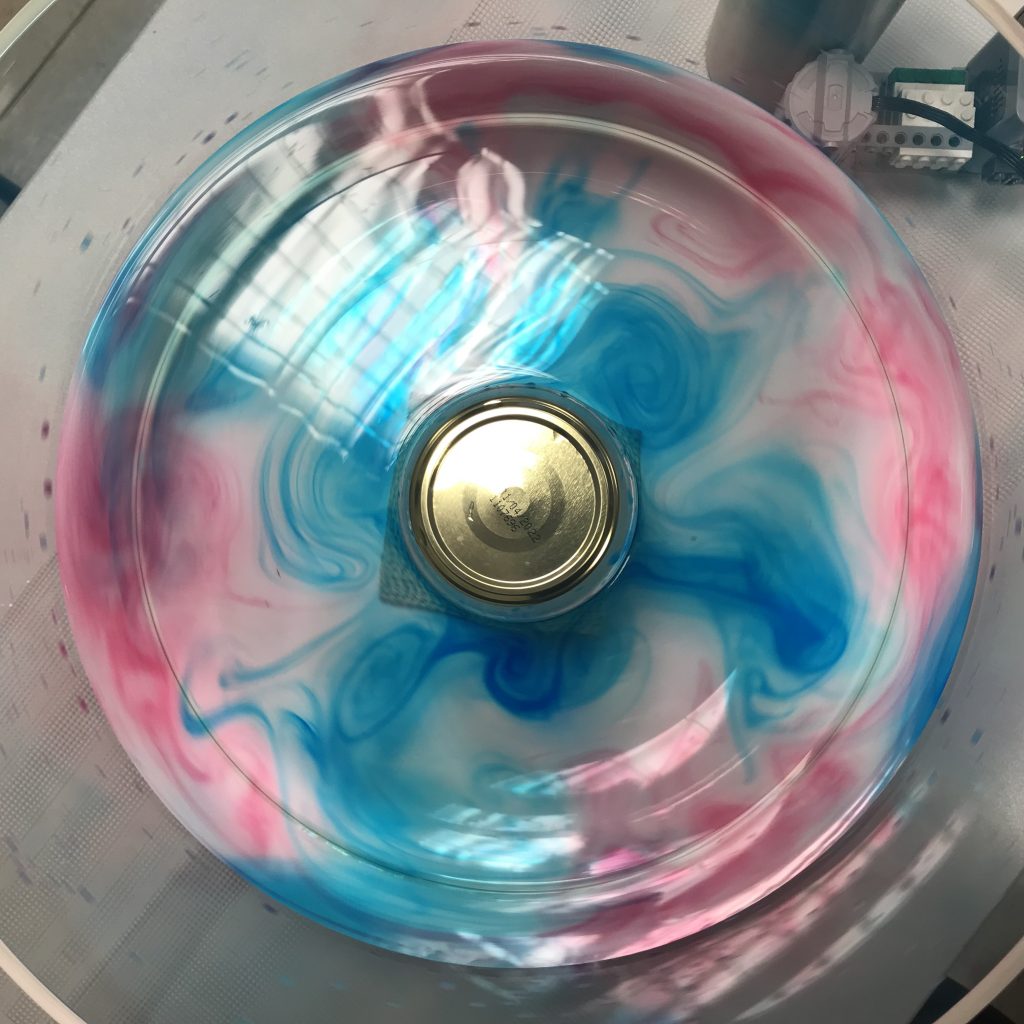
Since we still have a cold area and a warm area, heat transport has to happen. But instead of through an overturning circulation as in the non-rotating case, it now happens through 2D instabilities. Marking the cold region with blue dye and the warm region with red dye again, we see that now eddies lead to a transport of water that acts to mix waters of different temperatures.
More images and videos of this happening over on my blog.
Did we convince you that rotation is important when looking at geophysical fluid dynamics? What experiment would you like to try?
